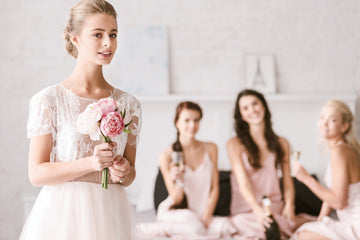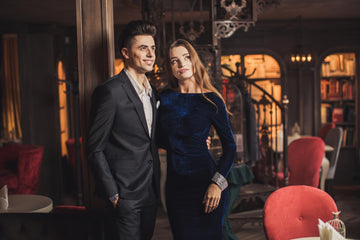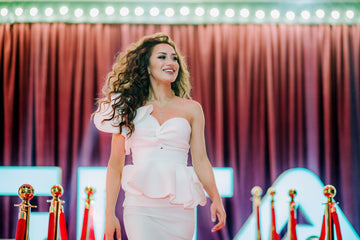How to Create the Perfect Formal Spring Outfit: Tips for Style and Comfort

Spring is here, and it’s time to shed those heavy winter layers and embrace the lighter, brighter wardrobe options this season brings. For many of us, it’s not just about dressing for the weather, but also about finding the right outfit for the various formal events that pop up. Whether it's a spring wedding, a corporate gathering, or even a formal family dinner, looking polished and feeling comfortable can be a bit tricky. But don’t worry—this guide will help you navigate through the ins and outs of creating a formal spring outfit that will make you feel confident and stylish.
We’ll break things down into clear steps and sprinkle in a few relatable, real-life examples to make sure the concepts stick. Ready to dive in? Let’s get started!
Understanding Formal Spring Fashion
First things first, what exactly does “formal” spring fashion mean? The term “formal” usually refers to outfits that are appropriate for events like weddings, galas, dinner parties, business conferences, or any occasion where more polished attire is required. In spring, this typically means lighter fabrics, softer colors, and styles that are comfortable yet sophisticated.
But, there’s a catch. Spring weather can be a bit unpredictable—one minute it’s sunny, and the next, a quick shower might catch you off guard. So, you’ll need an outfit that balances formality with practicality. Let’s explore what works and what doesn’t in this unique season.
Step 1: Choose the Right Fabrics
The fabric you choose will set the tone for your whole look. For spring, lighter fabrics like cotton, linen, silk, and blends are perfect. They’re breathable, comfortable, and give off a more relaxed yet elegant vibe. Avoid heavier fabrics like wool or velvet unless the event requires it.
Real-life Scenario:
Imagine you’ve been invited to a spring wedding in a beautiful garden setting. The ceremony starts at 2 pm, and it’s likely to be warm, but it might get chilly later in the evening. If you wear a heavy wool suit, you might find yourself sweating during the ceremony and freezing during the reception. On the other hand, a lightweight cotton blazer paired with a breathable dress shirt or blouse will keep you comfortable throughout the entire event.
For women, spring calls for dresses that flow and breathe. Opt for silk or chiffon dresses—they not only look elegant but also give off an airy, graceful feel. If you’re someone who tends to get warm easily, a linen dress could be your best bet.

Step 2: Stick to Light, Fresh Colors
Spring is all about fresh, vibrant colors—think pastel shades, soft neutrals, and light blues, greens, or even lavender. These colors capture the essence of the season and instantly make you feel lighthearted. Formal doesn’t mean dull, so don’t hesitate to experiment with colors while keeping things elegant.
However, avoid too many bright, neon shades. They may come off as too casual or out of place in formal settings. Instead, go for muted shades or tones that have a more sophisticated feel.
Real-life Scenario:
Let’s say you’re attending a corporate conference in spring. The dress code is business formal, and while you don’t want to wear a stiff, dark suit, you can still bring in some color. A light grey or pastel blue dress shirt, for example, will keep you looking professional but add a touch of spring flair to your look. For women, a soft pink or mint green dress paired with nude heels might be the perfect combination for a formal but fresh spring outfit.
Step 3: Layer Smartly for Comfort
One of the challenges of dressing for spring is that the temperature can fluctuate throughout the day. While mornings might be chilly, afternoons can quickly become warm and sunny. To ensure you’re prepared for any weather, layering is key. A light blazer or tailored jacket can be your best friend.
Real-life Scenario:
Picture this: You’re heading to an outdoor formal dinner on a spring evening. The sun’s starting to set, and the temperature’s dropping quickly. You’re wearing a sleeveless dress, and you start to shiver as the wind picks up. Thankfully, you brought a stylish yet light cashmere cardigan to drape over your shoulders. It’s elegant, it’s practical, and it keeps you comfortable while still looking put together.
Step 4: Pay Attention to Accessories
Accessories can elevate your formal spring outfit to the next level, but you don’t want to go overboard. Keep things simple and classy. For men, a nice watch, a tie that complements your outfit, and perhaps a pocket square can add that extra touch of elegance. For women, delicate jewelry, like a pair of stud earrings or a dainty bracelet, will add sophistication without stealing the spotlight.
When it comes to shoes, comfort is just as important as style. Women can go for elegant pumps or ballet flats, while men may choose dress shoes or loafers. If you’ll be walking around a lot, consider a sleek pair of dress shoes with memory foam or supportive insoles for added comfort.
Real-life Scenario:
Let’s say you’re getting ready for a formal networking event at a hotel. You’ve chosen a crisp, light-colored suit and are looking to add a bit of polish to your look. Instead of a bright, flashy tie, you opt for a classic navy blue tie with a subtle pattern. It’s professional but still interesting. You top it off with a sleek silver tie clip and a leather strap watch—subtle yet undeniably sharp.

Step 5: Don’t Forget to Consider the Event’s Specific Dress Code
Every formal event may have a slightly different vibe, and this can affect your outfit choices. It’s crucial to consider the dress code when assembling your look.
-
Black Tie: If the event calls for “black tie,” a tuxedo or a floor-length gown is a must. This is a formal occasion where you want to go all out. For women, think elegant silk gowns, and for men, a classic black tuxedo with a bow tie.
-
Business Formal: This typically means a suit or a professional dress. Men should stick to a suit and tie, while women can wear a tailored dress or a blazer and trousers combination.
-
Semi-formal: If the invitation says “semi-formal,” this gives you a bit more flexibility, but you still need to keep it classy. For men, think a suit without the tie, and for women, a cocktail dress or a chic blouse paired with a pencil skirt will do the trick.
Real-life Scenario:
You receive an invite to a semi-formal spring gathering at a local museum. The event is being held outdoors, and the theme is elegant but relaxed. You decide on a pair of tailored black trousers, a soft white blouse, and a colorful blazer in a floral print. For shoes, you choose block-heeled sandals that offer comfort without sacrificing style. It’s the perfect outfit for a semi-formal occasion that’s both polished and playful.
Step 6: Confidence is Key
No matter what outfit you choose, confidence is the real secret to pulling off a formal spring look. If you feel comfortable and at ease in your outfit, it will show. Stand tall, smile, and enjoy the event!
Real-life Scenario:
Imagine you’re about to step into a large conference room filled with colleagues and potential business partners. You feel a bit nervous, but as soon as you look in the mirror and see yourself dressed in that perfectly tailored suit, something clicks. You know you’ve got this. You take a deep breath, adjust your tie, and walk in with confidence, ready to make connections and leave a lasting impression.
In Conclusion
Creating the perfect formal spring outfit isn’t as daunting as it sounds. By choosing the right fabrics, colors, and accessories—and layering wisely—you’ll stay comfortable and look effortlessly chic. Whether you’re attending a wedding, a conference, or an intimate family dinner, these simple guidelines will help you stand out while staying true to the season’s spirit.
Remember, it’s not about wearing the most expensive pieces—it’s about choosing clothing that makes you feel good, fits the occasion, and is comfortable enough for you to enjoy the event. Keep these tips in mind, and soon enough, you’ll be rocking your formal spring outfits with ease and confidence.











